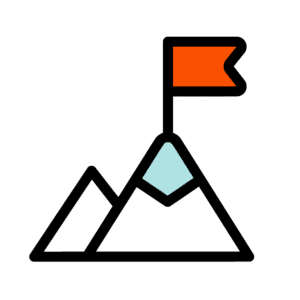

Implementing dedicated digital and online assessment strategies brings with it opportunities for streamlining internal processes, modernizing practices and improving sustainability. Depending on how far you already are with digitisation as an institution, the level of resources required to support educators, administrators and candidates will differ.
The aim of any digital or online assessment strategy is to improve student learning outcomes and advance the institution’s pedagogy. As such, reviewing your digital assessment strategies ensures continuous improvements. For the review process to be successful, institutions should:
- Assemble the right group
- Decide what to access and how
- Agree on the metrics.
Assemble the Right Group
Effective digital and online assessment change through using the right digital capabilities can be driven by assembling the right group of people to review your strategies and how you implement them.
-
Educators
The cognate experts in each field know how their candidates are taught and how they are best assessed.
-
Learning and Teaching Specialists
For wider academic input on digital assessment best practice.
-
Learning Technologists
Their combination of learning and teaching and technology knowledge assists with the art of the possible, e.g. digital and online exam best practice. They can suggest potential ways of using technology and validating ideas generated by others.
-
Accessibility Professionals
To ensure that all candidates are catered for in the right way.
-
Centralized and Local Assessment Officers
Their expertise in how assessments are administered plus their insight into how processes can be improved is invaluable.
-
IT Professionals
To ensure that a dedicated digital assessment ecosystem sits within the wider institutional set of tools so that data flows are properly and efficiently managed. They can also assist with reviewing technology standards and assessment.
-
Senior Leadership
So that decisions are taken within the wider institutional strategies.
Effective change is driven by the combination of these stakeholders pooling their knowledge, skill and experience to enhance digital and online exams and assessments across an institution.
What You Assess, and How

An effective review of your assessments consists of considering how you conduct formative and summative assessments today. Take each and break them down into the various modes of assessment within each, i.e. paper-based and online exams, coursework, tests, quizzes, take-home assignments and portfolios.
Next consider the extent to which they are digitized now, or are still on paper. What would you ideally like to achieve with each? How could they be improved? The potential improvements to your digital or online assessment strategies are:
- Authenticity
- Level and speed of feedback
- Richness of feedback including audio as well as written feedback
- Integrity measures
- Assessment design unconstrained by existing technologies.
Consider the phasing of how you continue your digitisation of assessments . You may want to start by improving summative assessments so that educators have greater flexibility but with a suite of integrity measures. Or you might want to pick a specific assessment type such as exams in both a formative and summative context to improve the level of availability and feedback open to candidates.
What Are the Metrics to Consider When Reviewing Your Current Digital and Online Assessment and Strategies?

The intricate interplay between technology, student experience, pedagogy, and the evolving needs of educational institutions also requires special consideration to be given to metrics. When reviewing your digital or online assessment strategies you should consider metrics such as:
- Ease of administrative tasks
- Candidate experience
- Ease of assessment creation
- Ease of marking
- Academic integrity
- Environmental sustainability
- Accessibility
- Digital resilience
- Digital Literacy among all stakeholders; faculty, staff and students
- Authentic or varied assessment types.
Mapping these against current technologies versus what is possible with greater flexibility will demonstrate both where you can innovate alongside what you need to do as an institution to unlock the greatest benefit from new capabilities.
What’s Next?

From here, you have the right information to decide how to implement flexible digital assessment with integrity measures. Depending on your context you could select from one of the following routes:
- Piloting in a specific school or programme – This allows you to conduct a small scale trial within a specific context and limit the number of people involved in change to a manageable level.
- Piloting a specific assessment type, eg summative exams – This requires a larger number of people but will give you a greater data set to make future decisions.
- Institution-wide change – This may be after a pilot or you may have the right data and resources to make the change now.
At Inspera we have worked with institutions across the globe who have taken these and other routes to implementation. Flexible assessment with integrity can be achieved in many different ways and we can help you create an optimised route to success. Check out our customer stories to find out more about their journeys.



